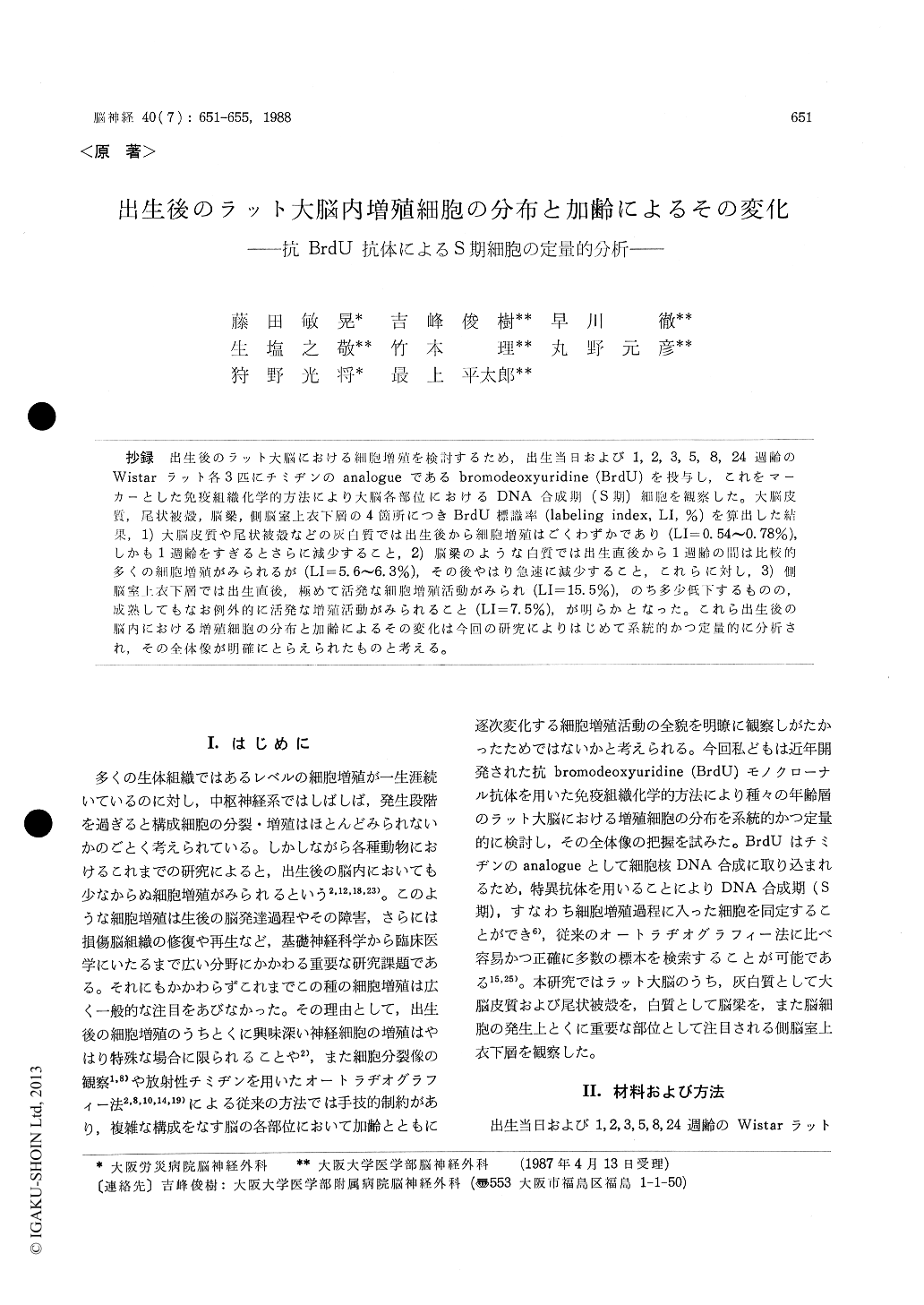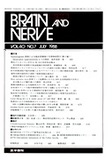Japanese
English
- 有料閲覧
- Abstract 文献概要
- 1ページ目 Look Inside
抄録 出生後のラット大脳における細胞増殖を検討するため,出生当日および1,2,3,5,8,24週齢のWistarラット各3匹にチミヂンのanalogueであるbromodeoxyuridine (BrdU)を投与し,これをマーカーとした免疫組織化学的方法により大脳各部位におけるDNA合成期(S期)細胞を観察した。大脳皮質,尾状被殻,脳梁,側脳室上衣下層の4箇所につきBrdU標識率(labeling index, LI, %)を算出した結果,1)大脳皮質や尾状被殻などの灰白質では出生後から細胞増殖はごくわずかであり(LI=0.54〜0.78%),しかも1週齢をすぎるとさらに減少すること,2)脳梁のような白質では出生直後から1週齢の間は比校的多くの細胞増殖がみられるが(LI=5.6〜6.3%),その後やはり急速に減少すること,これらに対し,3)側脳室上衣下層では出生直後,極めて活発な細胞増殖活動がみられ(LI=15.5%),のち多少低下するものの,成熟してもなお例外的に活発な増殖活動がみられること(LI=7.5%),が明らかとなった。これら出生後の脳内における増殖細胞の分布と加齢によるその変化は今回の研究によりはじめて系統的かつ定量的に分析され,その全体像が明確にとらえられたものと考える。
The postnatal cell proliferation in the rat cere-brum was studied immunohistochemically using a monoclonal antibody to bromodeoxyuridine (BrdU). Since BrdU, a halogenated analogue of thymidine, is incorporated into nuclear DNA during duplica-tion, S-phase cells can be detected by demonstra-ting intranuclear BrdU. 200 mg/kg of BrdU was administered to normal Wistar rats intraperitoneally on the day of birth or intravenously 1, 2, 3, 5, 8 or 24 weeks after birth. Thirty minutes later, the brain was fixed by perfusion with ethanol, and the paraffin-embedded sections were processed for the avidin biotin peroxidase-complex method. BrdU-positive nuclei were counted among 500 to 10000 cells in several regions of the brain to obtain the BrdU-labeling index (the number of BrdU-positive cells per 100 cells scored, LI, %). The present study demonstrated that ( 1 ) proliferating cells in the gray matter (cerebral cortex and caudate-putamen) are only few at birth (LI=0.54- 0.78%), which further decrease during the fol-lowing few weeks, and disappear by adulthood, (2) in the white matter (corpus callosum), cell proliferation is relatively active within 1 week after birth (LI= 5.6-6.3%), but becomes inactive thereafter, (3) the proliferative activity of the cells in the subependymal layer of the lateral ven-tricle is very high at birth (LI= 15.5%), which somewhat decreases during the following few weeks, but still remains high in adulthood (LI= 7.5 %). This kind of continued cell proliferation in the brain after birth seems important in the post-natal development of the normal cerebral struc-ture, and in several pathologic processes such as tis-sue repair and the development of brain neoplasm.

Copyright © 1988, Igaku-Shoin Ltd. All rights reserved.


